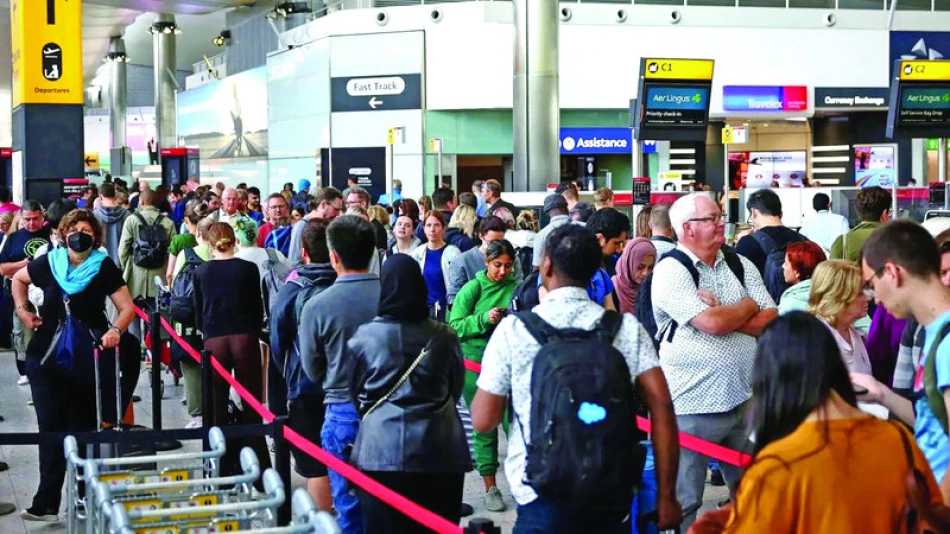
EU Aims to Lift Liquids Ban on Flights, Enhancing Air Travel Convenience
EU Airports Set to End Liquid Restrictions as New Scanning Technology Finally Gets Green Light
After nearly two decades of the dreaded 100ml liquid rule, European airports are preparing to phase out carry-on liquid restrictions thanks to advanced CT scanning technology. The European Commission has officially approved new baggage scanners capable of reliably detecting liquid explosives, marking the beginning of the end for one of air travel's most inconvenient security measures introduced in 2006.
The Technology Behind the Change
The breakthrough comes from computed tomography (CT) scanners similar to medical imaging equipment, which can create detailed 3D images of baggage contents and identify explosive materials with unprecedented accuracy. According to the European Commission, approximately 700 of these advanced scanners are currently operational or being installed across 21 EU member states.
This represents a significant technological leap from the basic X-ray machines that have dominated airport security for decades. The new systems can analyze the molecular composition of liquids, eliminating the guesswork that previously required blanket restrictions on all containers over 100ml.
Implementation Challenges Slow Rollout
Despite the technological approval, airports face substantial logistical and financial hurdles in upgrading their security infrastructure. The German Airport Association warns that nationwide implementation will be "complex and expensive," requiring not just new equipment but significant structural modifications to accommodate the larger machines.
Frankfurt Airport's Gradual Transition
Germany's busiest airport exemplifies the challenges ahead. Frankfurt has equipped only 40 of its approximately 190 security lanes with the new systems, with another 40 on order. Even with partial deployment, passengers still face the 100ml limit because it's unclear which scanner will process their bags, and some new machines still lack the necessary software updates.
Seasonal Delays Impact Timeline
Munich Airport has postponed software updates until after the busy holiday season, highlighting how operational demands can delay technological progress. This cautious approach reflects lessons learned from summer 2024, when the EU temporarily reimposed liquid restrictions after expressing doubts about the new scanners' reliability.
Market Implications for Aviation Industry
The liquid restriction removal represents more than passenger convenience—it signals a broader modernization of airport security that could reshape operational efficiency. Faster security processing could reduce airport congestion, potentially allowing airlines to optimize scheduling and reduce delays that cost the industry billions annually.
However, the substantial infrastructure investment required—estimated in the hundreds of millions across the EU—may pressure smaller regional airports. This could accelerate consolidation trends as airports struggle to justify the costs against passenger volumes.
The Broader Battle Over Carry-On Fees
While liquid restrictions grab headlines, a parallel regulatory battle over carry-on baggage fees may prove more financially significant for airlines. The European Parliament's Transport Committee has approved proposals requiring airlines to allow passengers a personal item plus a carry-on bag up to 7 kilograms without additional charges.
This regulatory push directly challenges the low-cost carrier business model pioneered by airlines like Ryanair and EasyJet, which generate substantial revenue from baggage fees. The proposal still requires full parliamentary approval and negotiations with member states, but it signals growing regulatory appetite to limit airline ancillary fee practices.
International Competitive Dynamics
The EU's move puts pressure on other major aviation markets to modernize their security infrastructure. US airports have been slower to adopt CT technology for carry-on screening, potentially creating a competitive disadvantage as European airports offer more streamlined passenger experiences.
Singapore and Dubai, already leaders in airport innovation, may accelerate their own security upgrades to maintain their competitive edge as global transit hubs. The technology gap could influence passenger routing decisions, particularly for connecting flights where security re-screening is required.
Timeline and Regional Variations
Implementation timelines vary significantly across the EU. Spain has begun deploying new scanners at Palma de Mallorca, Madrid-Barajas, and Barcelona airports. Romania expects to complete its upgrade by the first quarter of 2026, while Slovenia's Ljubljana airport has already implemented advanced screening since opening a new terminal in 2021.
This staggered rollout means passengers will face inconsistent rules across European airports for several years. The complexity of coordinating 27 different national aviation authorities ensures that full implementation will be gradual rather than uniform.
Long-Term Security Evolution
The liquid restriction removal represents just one element of airport security's technological evolution. As CT scanning becomes standard, airports are simultaneously exploring biometric identification, automated threat detection, and artificial intelligence-powered screening systems.
These developments suggest that the rigid, one-size-fits-all security measures introduced after 9/11 are giving way to more sophisticated, risk-based approaches. The success of liquid restriction removal could accelerate adoption of other technologies that balance security effectiveness with passenger convenience.
For frequent travelers, the end of the 100ml rule cannot come soon enough. But the real test will be whether airports can implement the new technology smoothly without creating new bottlenecks or security vulnerabilities during the transition period.
 Sara Khaled
Sara Khaled







